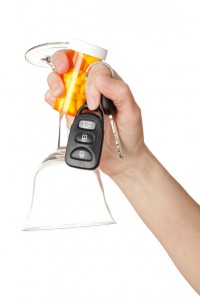04 – Drugged Driving: What is it and What Can We Do About It? A Conversation With Dr. Robert DuPont

October 24, 2013 | Posted in Drugged Driving, Podcast Episodes | By Traffic Safety Guy
Comments Off on 04 – Drugged Driving: What is it and What Can We Do About It? A Conversation With Dr. Robert DuPont
Podcast: Play in new window | Download
Subscribe: RSS

Dr. Robert DuPont
Dr. Robert DuPont, President of the Institute for Behavior and Health, provides a comprehensive perspective on preventing drugged driving. As the first Director for the National Institute on Drug Abuse (NIDA) and the second White House Drug Chief, Dr. DuPont has been a leader in drug abuse prevention for decades. In this episode Dr. DuPont and I talk about drugged driving and the steps that can be taken to reduce its pervasiveness.
The latest research demonstrates drugged driving is pervasive and widespread. A 2007 national survey to determine the extent of drugs present found that of the drivers tested, nearly 16% tested positive for drugs – 11% illegal drugs, 4% prescription drugs and 1% both illegal and prescription. In another national study, of the drivers killed in 2009 in motor vehicle crashes with known drug-test results, one-third tested positive for drugs.
According to Dr. DuPont and others, including the Centers for Disease Control (CDC) and the Office of National Drug Control Policy (ONDCP), drugged driving is at an epidemic status. Steps must be taken now to improve safety on our roads. For many years, the focus has been on alcohol-impaired driving, but it is no longer just about alcohol or just about other drugs. It is not either/or, it is both. We must look at the broader issue of “substance-impaired driving.”
Drugged Driving and Prescription Medication

Prescription medication may cause drugged driving
When talking specifically about drugged driving, we need to recognize that it is often the result of prescription and over-the-counter medications. It is critical that we understand the consequences of taking medicine, and follow the instructions. For instance, drinking alcohol while on medication can result in serious unintended consequences. Drugged driving can also be a concern when someone is starting a newly prescribed medication or has recently increased the dosage of their usual prescription, or is concurrently taking several different drugs.
Drugged Driving and Illegally Obtained Drugs
According to Dr. DuPont, the more immediate and easier situation to address are those individuals who:
- Use illegal drugs and then drive, or
- Take prescription mediation that is not prescribed for them, or
- Obtain prescriptions when there is no medical need.

Alcohol and Other Drugs: It is all substance impaired driving
Those intent on abusing prescription medications can obtain them through a variety of methods, such as the black-market or “pill mill” doctor, or by going to a doctor and convincing that doctor that the need is genuine. People that abuse drugs will lie about their symptoms, and at times it is hard for a doctor to determine the truth. That may require physicians to start drug testing all of their patients. As Dr. DuPont noted, while such a step may offend some patients, it is an important process to ensure the medication is being prescribed for a legitimate purpose. These routine drug tests would also serve to inform doctors about other medications the patient is taking.
Pill mill doctors are doctors who are not operating ethically, and typically provide pain medication under the guise of treating the person. The pharmaceutical chain CVS attempted to shut down this type of doctor by examining its prescription data. After finding that a few doctors had written an unusually large number of prescriptions, CVS declared that these doctors would no longer have dispensing privileges. And what is “an unusually large number of prescriptions?” One doctor whose privileges were suspended had prescribed more than 44,000 doses of high-risk drugs, compared to other doctors in his region who had prescribed 662 doses.
Recommendations by Dr. DuPont
In wrapping up, Dr. DuPont has two key recommendations to reduce drug impaired driving:
- Regularly drug test everyone who is arrested and convicted for impaired driving, whether it is because of alcohol or other drugs, and
- Every state must pass a ‘per se” law to address those who drive with illegal drugs or with prescription medication without a prescription. It is a law with a zero tolerance for illegal drugs. As he noted, this is similar to the ‘per se’ laws already in effect for alcohol nationwide.
In my closing comments I note the importance of parents talking to their children about drugged driving. ONDCP has developed a very useful tool kit with the facts on the dangers of teen and young adult drugged driving, and activities for effective prevention, a link can be found below.
Related Links:
Websites:
- Centers for Disease Control & Prevention
- Institute for Behavior and Health Website
- National Institute on Drug Abuse
- Office of National Drug Control Policy – Drugged Driving
- Stop Drugged Driving Website
Research:
- 2007 National Roadside Survey of Alcohol and Drug Use by Drivers – NHTSA
- Drug Involvement of Fatally Injured Drivers – NHTSA Traffic Safety Facts – November, 2010
- Drugged Driving White Paper – IBH
- Drug Use and Fatal Motor Vehicle Crashes
Other:
- CVS Suspends Privileges of Doctors
- Traffic Safety Guy Blog – Drugged Driving: The Time Has Come for Action
Previous Episodes:
Video Clips:
03 – Gerald Waters: Making a Difference in New Zealand

October 12, 2013 | Posted in Global Road Safety, Podcast Episodes | By Traffic Safety Guy
Comments Off on 03 – Gerald Waters: Making a Difference in New Zealand
Podcast: Play in new window | Download
Subscribe: RSS
One Person Can Be a Beacon of Change

Gerald Waters (front, center) receiving the Barry Sweedler Award
Gerald Waters is one of New Zealand’s leading advocates on ways to effectively respond to alcohol and drug offenders. In 2010, his dear friend Katherine Kennedy was killed because of a drink driver. (“Drink Driving” is how New Zealand refers to impaired driving.) Gerald has committed himself to learning about, researching, and promoting evidence-based ways to end drink driving.
Hearing that the man who killed his friend had 17 prior drink driving convictions, and yet he was still drinking and driving, was “madness.” After this terrible tragedy, Gerald turned to understanding why this madness occurred. It was that journey that allowed him to develop his research and ultimately his message of change. Using his evidence-based research papers, and a drive for understanding, Gerald has brought together an impressive coalition of partners, and is changing how New Zealand responds to drink drivers. In this episode, Gerald discusses his journey and lets us hear about his perseverance and determination.

One Person Can Make a Difference
During our conversation, Gerald talks about building the coalition, and how he met individuals all across New Zealand who agreed with his research, and had previously felt that they were left in the dark, alone. With the power of his writing and the passion of his voice, Gerald let those individuals know that they were not alone and change is possible. He has become an inspiration of positive change. Because of Gerald’s activities, New Zealand has taken a fresh look at ending drink driving through the use of ignition interlock devices, DWI/Drug Courts, and more. Margaret Mead once said “Never doubt that a small group of thoughtful, committed citizens can change the world. Indeed, it is the only thing that ever has.” Change is happening in New Zealand, and it can happen where you live.
Wrapping up, the Traffic Safety Guy discusses making changes in our own lives. It shouldn’t take the loss of a family member or friend for us to care. All it takes is an understanding that individually we can make a difference. “Change” starts at home. It means talking the talk and walking the walk. As a positive role model for not drinking and driving, we can impact our family and friends and save lives. As a positive role model we can all be an inspiration and make a difference.
Related Links:
Gerald Water’s Websites:
A Partial List of Gerald Water’s Research:
- Submission to the Transport and Industrial Relations Select Committee
- The Case for Alcohol and Other Drug Treatment Courts in New Zealand
- Was This Preventable?
Global Road Safety:
Richard Roth’s Website:
02 – Vehicle Safety: Buying a Safer Car with Joseph Nolan, IIHS

October 3, 2013 | Posted in Car Safety, Podcast Episodes | By Traffic Safety Guy
Comments Off on 02 – Vehicle Safety: Buying a Safer Car with Joseph Nolan, IIHS
Podcast: Play in new window | Download
Subscribe: RSS
Joseph Nolan, Vice President for Vehicle Research at the Insurance Institute for Highway Safety (IIHS), speaks with me about what you can do to buy a safer car. While the IIHS is involved in a wide range of highway safety activities, one of their best known is their ratings developed from car crash testing. Five types of crashes are done by the IIHS, with each scored separately:
- Moderate overlap front
- Small overlap front (less of the car is impacted than in the moderate overlap)
- Side
- Roof strength, and
- Head restraints.
IIHS Safety Rating for Cars
Once a car is put through each crash test, it receives an overall rating: Poor, Marginal, Acceptable or Good. A vehicle that receives a “Good” rating in the moderate overlap front, side, roof strength, and head restraint tests is deemed a Top Safety Pick by the IIHS. If the car rates a “Good” in 4 out of 5 tests and “Acceptable” in the 5th, then it gets a Top Safety Pick + (Plus).

IIHS Vehicle Research Center
The IIHS started doing crash testing in the early 90s with one crash test, the moderate overlap front. At that time, many of the cars were rated either “Marginal” or “Poor.” Today, nearly all cars earn “Good” ratings in this crash test. As each new crash test has been added, car manufacturers have responded, designing safer cars in each attribute. Receiving the IIHS Top Safety Pick is now a valued recognition of the work done by car manufacturers and it is often included in their car advertising. To see the ratings of cars or trucks, go to www.IIHS.org. The Institute has a YouTube channel where you can watch many of the crashes. In the very near future, The Institute will also be examining and comparing a variety of the new crash avoidance technologies.
Safer Car App
Before my conversation with Mr. Nolan, I talk about the NHTSA 5-Star Safety Rating Program, which provides information about crash protection and rollover safety of new vehicles beyond what is required by Federal Law. One star is the lowest rating, with five stars being the highest. To find the ratings for your car, check out the website: SaferCar.gov. There, you can enter the make, model, and year and get a summary of how your car did in the safety tests.
NHTSA’s SaferCar App
Also, to help keep in touch with the various ratings done by NHTSA while out shopping for a new car, you can download the SaferCar app. It is available on iTunes, with an Android version currently in development. This app allows you to check out the various car ratings from your iPhone or iPad, see if there have been any recalls, or file a complaint. The app even provides help in installing a child safety seat.
Related Links:
Websites:
Phone App:
Other:
Video:
- 50th Anniversary of the IIHS – Crashing a 1959 Chevrolet Bel Air and a 2009 Chevrolet Malibu

